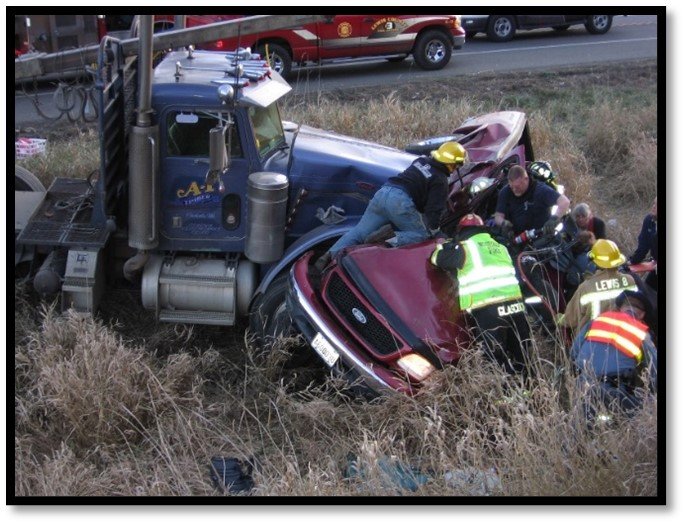Seems like we’re pretty quick to blame human error for collisions on our roads. Unless we happen to be the driver.
Why wasn’t there a sign warning of the sharp turn ahead?
Why are there so many crashes at this busy intersection — shouldn’t there have been a traffic signal making clear who has the right of way?

Wouldn’t a concrete median barrier stop the cross-over head-on collisions on this highway?

Some dangerous roadway conditions may be fairly apparent — deep potholes, ruts in the asphalt pavement that collect water and cause hydroplaning, pavement edge drop-offs, and icy roadway surfaces.
At the same time, state and local transportation departments maintain records of sections of highways, county roads, and city streets at high collision areas. These governmental entities are aware of hazardous conditions and know full well that the collisions that occur at these locations are the result of a hazardous conditions that may not be evident to a driver.
One of many examples is overgrown vegetation at the approach to an intersection. As shown below, blackberry bushes blocked the view of an off-duty police officer who, although properly stopped at the painted stop sign bar, wasn’t able see a motorcycle approaching on her left until it was too late to avoid the crash.


Reviewing this case, the Washington Supreme Court declared both that sight obstructions caused by overgrown vegetation at intersections is unsafe and unacceptable, and that governmental entities throughout the State are responsible for accidents caused by this dangerous road condition (Wuthrich v. King County 158 Wn.2d 19, 366 P.3d 926 (2016).
In fact, since 1895, road authorities across Washington have had a duty to act with care in seeing to it that our streets and highway are maintained in a reasonably safe condition. If a dangerous condition causes or contributes to a crash, the governmental entity is liable for injuries and deaths resulting from its failure to fix or eliminate the roadway hazard (Owen v. Burlington Northern Railroad Co., 153 Wn.2d 780, 108 P.3d 1220 (2005).
Stritmatter Kessler Koehler Moore has been at the forefront of dangerous road cases over the past half-century. And not just for driver safety, but for the protection of pedestrians and bicyclists as well. We have been responsible for multiple advances in highway and street safety through many cases, in both our trial and our appellate courts.
We’re proud that our efforts over the years in holding the government responsible for accidents caused by dangerous roads have resulted in the elimination of many hazards and has made our streets and highways – and even crossing areas for pedestrians – safer for the people of our State.
To find out if you have a valid claim against a governmental entity for a car accident caused by a dangerous road, explore our case, or schedule your free consultation.
FILL OUT AN ONLINE INTAKE FORM
[1] The accident history for sections of roads throughout the State are available from the Washington State Patrol, as are the underlying Police Traffic Collision Reports for each crash.
